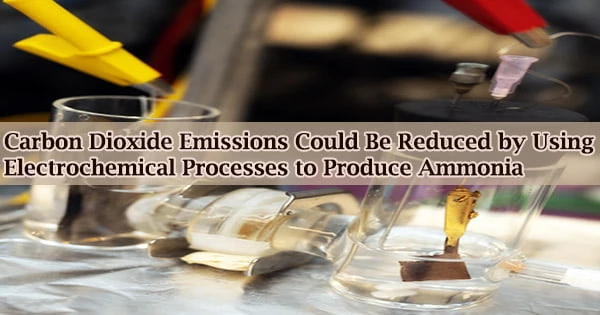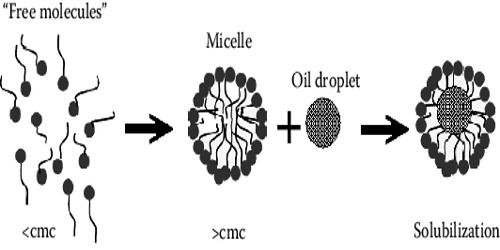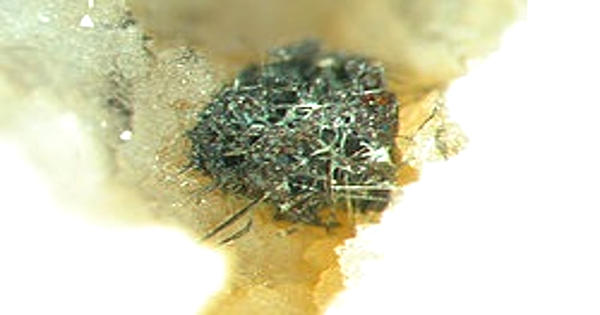Ammonia is widely used as fertilizer because it contains the most nitrogen of all commercial fertilizers, making it necessary for crop productivity. However, for every molecule of ammonia produced, two carbon dioxide molecules are produced, contributing to excess carbon dioxide in the atmosphere.
Ammonia is a colorless, flammable gas with a terrible odor. It can be found in nature, primarily as a result of anaerobic degradation of plant and animal materials, and it has also been discovered in space. Plants, primarily legumes, use rhizobia bacteria to “fix” atmospheric nitrogen and generate ammonia.
Dr. Abdoulaye Djire, assistant professor, and graduate student Denis Johnson from Texas A&M University’s Artie McFerrin Department of Chemical Engineering have advanced a method for producing ammonia through electrochemical methods, reducing carbon emissions.
The goal of this study is to replace the Haber-Bosch thermochemical process with an electrochemical approach that is more environmentally friendly and sustainable. The findings were just published in Nature Scientific Reports by the researchers.
Since ancient times, ammonia has been identified by its odor. Famous chemists discovered it in the 18th century. Commercially, it is made by catalyzing the reaction of nitrogen and hydrogen at high temperatures and pressures.
The Haber-Bosch process has been used to make ammonia since the early 1900s. The nitrogen in the atmosphere is combined with hydrogen gas in this process. The Haber-Bosch process has the disadvantage of requiring high pressure and high temperature, resulting in a huge energy footprint.
The process also necessitates the use of nonrenewable hydrogen as a feedstock. It is not sustainable and has negative environmental consequences, necessitating the development of new, ecologically friendly processes.
It’s easier for ammonia to form because the protons can attach to the nitrogen in the structure, form the ammonia, and then the ammonia will leave out of the structure. A hole is made in the structure that can pull the nitrogen gas in and separate the triple bond.
Denis Johnson
Ammonia is very soluble in water; nevertheless, its exact solubility is temperature-dependent (see fast facts). Ammonium hydroxide is another name for aqueous ammonia, although that molecule cannot be separated. Ammonia is referred to as “ammine” when it is utilized as a ligand in coordination complexes.
To manufacture ammonia from ambient nitrogen and water, the researchers propose employing the electrochemical nitrogen reduction process (NRR). The use of water as a source of protons and the capacity to create ammonia at room temperature and pressure are two advantages of utilizing an electrochemical technique.
This process might potentially use less energy, be less expensive, and be more environmentally benign than the Haber-Bosch method. The NRR is powered by an electrocatalyst. Nitrogen must bond to the surface and break apart to form ammonia for this process to work.
The researchers employed MXene, a titanium nitride, as the electrocatalyst in their investigation. The fact that nitrogen is already in the structure of this catalyst sets it apart from others, allowing for more efficient ammonia formation.
“It’s easier for ammonia to form because the protons can attach to the nitrogen in the structure, form the ammonia, and then the ammonia will leave out of the structure,” said Johnson. “A hole is made in the structure that can pull the nitrogen gas in and separate the triple bond.”
The researchers discovered that titanium nitride produces a Mars-van Krevelen process, which is a well-known hydrocarbon oxidation mechanism. Because of the nitrogen from the titanium nitride catalyst, this mechanism follows a lower energy pathway, allowing for increased ammonia production rates and selectivity.
The researchers achieved a selectivity of 20% without making any changes to the materials, which is the ratio of the desired product formed to the unwanted product formed. With certain tweaks, this technology could achieve a greater selectivity percentage, opening up a new path to ammonia manufacturing via electrochemical processes.
“The Department of Energy has set a goal of a selectivity of 60%, which is a challenging number to reach,” said Johnson. “We were able to reach 20% using our material, showcasing a method that we might be able to take advantage of moving forward. If we upgrade our material, can we reach 60% soon? That is the question we will continue to work to answer.”
On a bigger scale, this research could help cut carbon emissions and world energy consumption.
“In the future, this could be a major scientific reform,” said Djire. “About 2% of the world’s total energy is used for ammonia production. Reducing that huge number would drastically reduce our carbon footprint and energy consumption.”
The Startup Research Fund provided funding for this study. Eric Kelley of Texas A&M University’s chemical engineering department, Brock Hunter of Auburn University, and Jevaun Christie and Cullan King of Prairie View A&M University are among the other contributors to the publication.
















